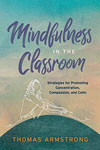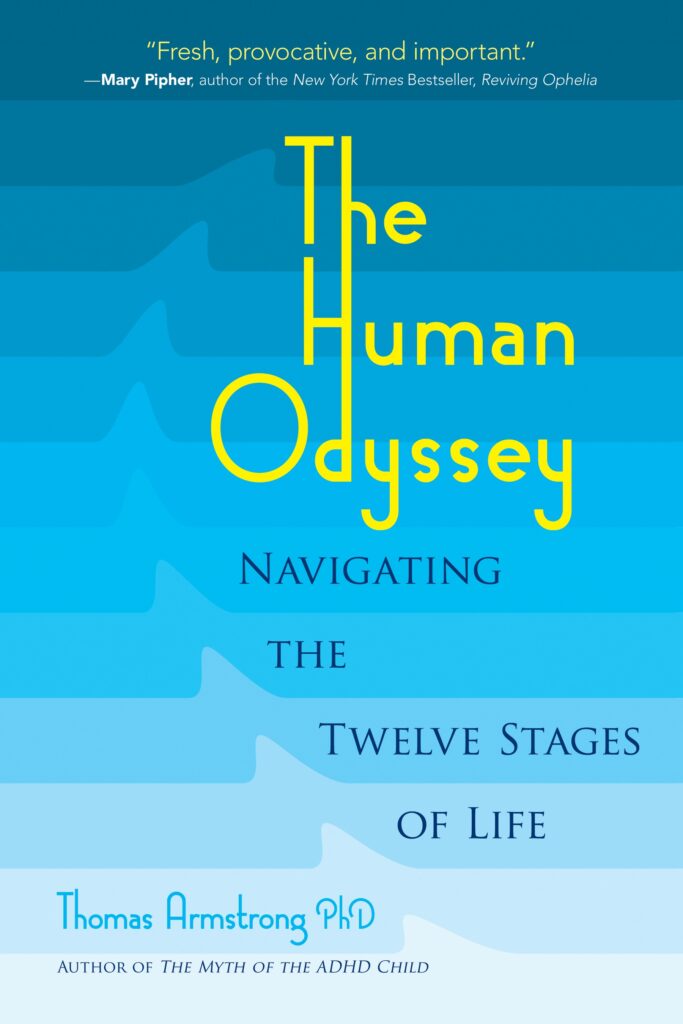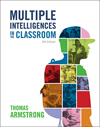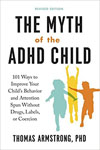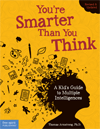This video, part of a multi-video series on my book The Myth of the ADHD Child, suggests that there are different types of attention, and kids diagnosed with ADHD, while often having difficulty with central task attention, actually excel in other forms of attention such as diffused or incidental attention, hyperfocus (flow), novelty-seeking, and creative perception. I describe these types of attention and point out that the ADHD community often fails to see the positive side of these unique ways of attending to the world, to the disservice of the kids who have that label. After the video, there’s a full transcript of the contents.
Transcript of Video
Hi, I’m Dr. Thomas Armstrong. This is part 3 of my 12-part video series on The Myth of the ADHD Child.
Let me just preface this presentation by saying that I DO believe that ADHD symptoms exist. I’m not some looney out there saying the earth is flat or something equally crazy. I just believe after 50 years of studying this issue, that the hypothesis that there is a specific medical disorder called ADHD that causes these symptoms is wrong and that there are many other perspectives that can account for these symptoms. In this video, I look some alternative cognitive perspectives.
By cognitive, I mean specifically, how the brain and mind process information, how thinking takes place.
If we look at the label ADHD itself, we can see that we’re talking about one aspect of cognition – attention. Experts don’t call it memory deficit disorder, or problem-solving deficit disorder, even though these are also aspects of cognition. By focusing on attention, and saying there’s a deficit of attention, they’ve opened themselves up to some real mine fields.
The truth is that there are many different types of attention. There’s the attention that goes along with daydreaming, the attention that involves paying attention to many different things at the same time, the attention that has to do with creativity, the attention that is related to meditative experiences, (the attention of ‘’be here now’’). And there are many other kinds of attention besides these.
However, it’s important to recognize that when ADHD experts talk about attention deficits, they’re talking about deficits in focusing – what some cognitive scientists call central-task attention. It’s the ability to screen everything out and simply pay attention to a specific stimulus.
The context for this definition of attention is most clearly seen in the classroom. Here the student must screen out the other students’ behaviors, the stimuli on the walls, and ideas floating in and out of their brains, and other stimuli as well, and focus their attention on the teacher and the words and ideas coming out of them.
Or, alternatively, central task attention is the ability to screen out extraneous stimuli and focus on the bubbles on a standardized test, or the words in a book, or the problems on a worksheet.
So, to call difficulty with these contexts ADHD or attention deficit hyperactivity disorder is clearly misleading. It would be more accurate to call it something like Central Task Attention Deficit Disorder or Focused Attention Deficit Disorder — FADD (I like this second one, because it suggests that ADHD is a fad and fifty years from now, we’ll be wondering how we could have come up with such a troubling label as ADHD.
Actually, when we look at the broad range of types of attention, we begin to see that kids diagnosed with ADHD are very good at certain types of attention. In this presentation, I’d like to go over four types of attention that they excel in, the first one being ‘’Diffused Attention.’’
I became aware of this type of attention very early in my investigations, when in a 1984 article Stephen Ceci of Cornell University wrote a paper talked about incidental memory and attention diffusion.
Having worked with kids with these issues for several years in Canada and U.S., I could see what he was talking about. These kids were really good at paying attention – that is, paying attention to what they weren’t supposed to be paying attention to. They were best at attending to so-called irrelevant stimuli.
Of course, they weren’t irrelevant to the kids – they were very much interested in and drawn to this so-called irrelevant stimuli, but the teacher had other ideas, and the ADHD experts really take the side of teachers and parents rather than the point of view of kids. It’s like they’re saying: ‘’this is what’s important in this classroom, and this is what I want you to focus on. If you have problems with that, then you may have a medical disorder and perhaps you should even be medicated.’’
Most of classroom teaching is based upon this sort of demand – that kids focus their attention on the teacher, the workbook, the assignment, the instructions, the book. But keep in mind all those other kinds of attention, daydreaming, meditating, contemplating, visualizing. Those are definitely out of bound in most classrooms and given no value, despite the fact that some of the greatest geniuses in the world routinely attended to information in those ways.
There’s actually a teaching method out there that is based on diffused or incidental attention. It’s called Suggestopedia, developed by a Bulgarian psychiatrist named Georgi Lozanov. It’s also been called ‘’superlearning’’’ or ‘’accelerated learning.’’ It involves many different components, but I’ll give you a couple of examples. In one case, the teacher brings in NEXT week’s spelling words and posts them on the walls, saying nothing about them. As the kids’ minds wander, they’re attracted to those spelling words and they memorize them subconsciously.
Another technique they use is to have children close their eyes while the teacher puts on some music, often Baroque music in 4/4 time (like Pachelbel’s Canon in D). And she reads the list of vocabulary words and their definitions, or other information she wants the kids to learn, and she recites it in time to the music. The kids are told they don’t have to listen or concentrate or do any of the other things that traditional classrooms require, just sit back, relax, listen and enjoy the music. And their incidental attention – their diffused attention just gobbles it all up. Of course, it’s worth noting that there’s been hardly any interest or work in this area in most classrooms around the country.
A second type of attention that kids diagnosed with ADHD are good at is hyperfocus. I remember getting a letter from a mother who was also a physician many years ago, and she wrote that her son who was identified as ADHD could spend hours at a time working on his legos or at a video game, and she wondered how he could possibly have a deficit of attention. But then she learned that hyperfocus was part of the problem of ADHD.
My thought was, hey, beware if your child spends too much time focusing on the things that really interest them – they could have a medical disorder! And of course this is totally absurd – we want kids to be immersed in learning – or at least that’s what we SAY we want.
But the schools aren’t set up for that. They divide time into discrete segments and give kids only 42 minutes per class, so if they want to spend 2-3 hours investigating something of great interest, they’re out of luck.
The word hyperfocus has a negative feel to it, it’s based on the idea of deficit, dysfunction, and disorder. Don’t be so hyper, we tell kids. And of course, the word hyperactive also has that problem as we’ll see shortly. The words we use to describe things often affects our attitudes and perceptions, and when we used them in relation to children and their learning, the results can be devastating. It turns out that what the ADHD experts are calling ‘’hyperfocus’’ has been investigated for years under a different and much more positive term ‘’flow.’’ You can see the face or the vase(slide 18). It’s up to you.
Flow is a concept developed by a Hungarian-American psychologist named Mihaly Csikzentmihalyi.
He studied surgeons who operated for hours and came out of the process feeling relaxed and refreshed. He found the same thing with artists, rock climbers, and other people who were proficient in what they did. He described flow as a mental state of intense absorption, where one loses track of linear time and external stimuli, almost as in a meditative state, and when emerging from this state, they often feel more alive and awake than they did before.
Maria Montessori, the great Italian progressive educator also recognized this state in children. She called it ‘’the great work’’ – She would observe kids working with her materials totally focused on the task, oblivious to school bells, schoolmates and other stimuli, and simply go on with their activity for as long as they needed to. And interestingly, Montessori schools, at least the best ones, don’t chop up time like public schools, and allow kids to work through periods on activities that absorb them. And ADHD experts are calling this one of the symptoms of a medical disorder. This is simply outrageous!
A third type of attention that ADHD-diagnosed kids are good at is novelty-seeking. They’re not attracted to the same-old same-old but crave new experiences and novel stimuli. Again, we have to ask, what’s wrong with that?
Several years ago, ADHD experts were writing papers saying that kids diagnosed with ADHD had a specific genetic defect in a gene for a dopamine receptor in the brain. Dopamine is associated with a craving for stimuli and reward. This gene was famously called in the news ‘’the risk-taking gene’’ and I’m sure parents everywhere were afraid their kids had it and were going to perish in a sky diving accident or something of that sort.
But again, we come down to the use of words, terms and labels. Fortunately, other scientists were calling it something different: novelty-seeking. Something that sounds important – creative, useful, attractive. It turns out that what you call something affects how people relate to it, and how they respond to the child who has it.
So, we started seeing articles linking ADHD to this kind of novelty-seeking form of attention. This article [slide 25] called it a ‘’core feature of ADHD.’’
Schools aren’t really set up for novelty-seeking. Occasionally the rare teacher may bring in some artifact they found on a vacation that fascinated them, but usually it’s the same old same old – open your textbook to page 243 – that kind of thing. So, without novelty, these kids simply tune out. Is it their fault? Do they have a medical disorder simply because they’re attracted to novelty and new things?
It turns out that most of what we’ve learned in our lives has been as a result of our attraction to novelty. We’re hardwired to respond to novelty. How did we learn one of the most difficult symbol systems in existence: human language, but by being attracted to new sounds? How did we learn about the world? How would we have responded if we were simply given the same stimuli over and over and over again? Our brains would then wire themselves to that same old stimulus, and all the other potential brain connections would begin to atrophy. So how can we call novelty-seeking part of a medical disorder?
Finally, I want to talk about creative perception. Because a lot of what we’ve been talking about here seems related to creative behavior.
Several years ago, there was a very interesting article written in the Journal of Creative Behavior by a University of Georgia professor, Bonnie Cramond. What she had done was to look at the symptoms of ADHD and compared them to the traits of a creative person. And she began to realize that there weren’t any real differences between them, except for the terms (and the attitudes) underlying them.
With ADHD, we have that love of messes, chaos, distractions, side-trips, irrelevancies, and more.
And with our artists we see very much the same thing.
Going back to our face – vase graphic, we can see the symptoms of ADHD, hyperactivity, distractibility, impulsivity, but then begin to understand that for the artist hyperactivity is a good thing, it’s the vitality that engages in many things at once, and impulsivity is the artist’s spontaneity, where creative ideas just burst out spontaneously, and how distractibility is really divergency – the divergent mind, always making new connections (novelty-seeking), seeing things that no one else sees. Now many kids diagnosed with ADHD have these creative potentials, but they’re not being empowered to channel their energies in these positive artistic directions, first because the schools don’t value the arts, and second because their most positive qualities are seen as symptoms of a medical disorder. There are some really troubling issues brewing here. And I’ll leave you to contemplate them.
For more in-depth information about these alternative perspectives, and other themes of this video series, see my book The Myth of the ADHD Child: 101 Ways to Improve Your Child’s Behavior Without Drugs, Labels, or Coercion.
Also available in audio from Audible.
For educators, I’ve written the book ADD/ADHD Alternatives in the Classroom.
This blog post was brought to you by Thomas Armstrong, Ph.D. and www.institute4learning.com.
Follow me on Twitter: @Dr_Armstrong








